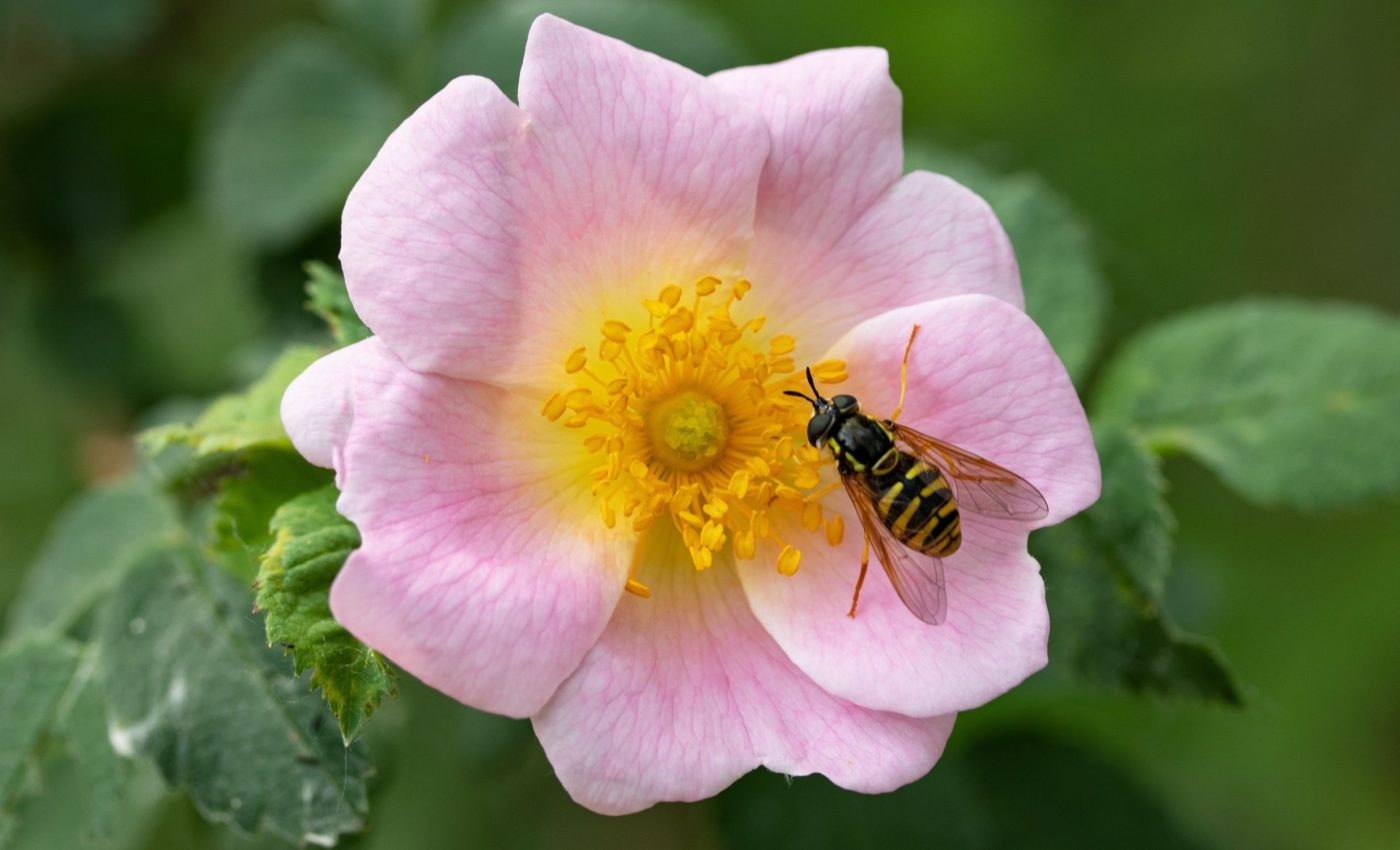
Both bees and humans like these flower mixes the best
In cities and countryside alike, bees, hoverflies, and other pollinators face a common problem – dwindling food supplies. As meadows vanish and flower diversity shrinks, pollinators struggle to find the nectar and pollen they need to survive.
Concerned citizens have begun planting wildflowers in gardens and parks to help, but there’s one lingering question: which flower mixes actually work best?
Identifying the best flower mixes
For years, suggestions came from well-meaning enthusiasts, local guides, or plant sellers. But until recently, there wasn’t enough science to back up these recommendations.
That’s where a collaborative study led by botanists from the University of Copenhagen and the National Botanic Garden of Wales stepped in. They created, tested, and compared flower seed mixes using both field trials and systematic data reviews.
The goal was to identify flower mixes that truly support bees, hoverflies, and solitary bees – and look good doing it.
“Much of our knowledge in this area is anecdotal. So, there was a need for a scientific approach, where we systematically test different flowers to be sure how we can best help pollinators, which are extremely important to our ecosystems,” said Professor Natasha de Vere.
Testing flower mixes in real gardens
The researchers reviewed 447 studies and tested flower mixes in real garden plots. They compared four commercial seed mixes and two experimental blends. Some contained only native plants, while others combined native and non-native species.
“We can see that seed mixtures containing both non-native and native flowering plants establish themselves better in the soil, bloom for longer, and have more visits from pollinators. And they are also most attractive to the human eye,” said Professor de Vere.
Public preference also aligned with the data. In a survey at the National Botanic Garden of Wales, visitors overwhelmingly chose the non-native mixes as their favorites.
Which flowers work best?
Based on the combined studies and field tests, these flowers emerged as top choices for pollinator-friendly seed mixes:
- Achillea millefolium (Yarrow)
- Anthemis arvensis (Corn chamomile)
- Centaurea cyanus (Cornflower)
- Echium plantagineum (Purple viper’s bugloss)
- Glebionis segetum (Corn marigold)
- Papaver rhoeas (Common poppy)
- Sinapis arvensis (Field mustard)
- Tripleurospermum inodorum (Scentless chamomile)
- Cosmos bipinnatus (Garden cosmos)
- Linaria maroccana (Moroccan toadflax)
- Phacelia tanacetifolia (Common phacelia)
Many of these species showed consistent flowering from July through October. Some, like G. segetum, attracted over 50% of hoverfly visits.
Bumblebees preferred cosmos and cornflower. Solitary bees favored scentless chamomile and corn chamomile.
Mixing native and non-native flowers
Non-native plants in mixes extended the flowering season and increased diversity. This combination also improved visual impact and public engagement. Visitors responded positively to mixes with bright colors and layered blooming patterns.
Some mixes were tailored specifically to bumblebees or hoverflies. These attracted their target pollinators but also benefited others. For example, the bumblebee-specific mix also drew honeybees in high numbers.
However, solitary bees were harder to attract. They may need nesting resources nearby, such as bare soil or cavity spaces. Their low numbers in the trials suggest they need more than just flowers to thrive.
Even small spaces can be supportive
Professor de Vere emphasized that everyone can contribute. You don’t need a large garden. A few square meters of the right plants and flower mixes can provide critical food sources.
“It has become quite popular to plant strips of flowers in urban areas and in gardens where there may have been only grass lawns before. This is because flowers are good for bees, but also for our mental health,” noted Professor de Vere.
“It is important that everyone does something to help – and even small changes can really make a difference. I myself only have a small backyard, which I have filled with the best plants for pollinators, and it is now full of bees and hoverflies.”
Designing the perfect pollinator mix
The researchers followed a clear decision process to select plants. First, they eliminated invasive or banned species.
Next, the team considered pollinator interaction records, horticultural value, cost, and flower traits. Plants were kept if they had over 10 verified pollinator interactions and were easy to grow from seed.
The researchers emphasized the need for both floral and nesting resources. For hoverflies, aquatic features or decaying wood may be key. Bees benefit from undisturbed soil and safe, pesticide-free environments.
The flower mixes that work
Mixes with both native and non-native species work best. They provide long-lasting blooms, visual appeal, and food for many types of pollinators. If you’re planning your garden or advising a community project, focus on these top performers.
The best results came from blends that included G. segetum, C. bipinnatus, T. inodorum, and A. arvensis. These flowers dominated in both aesthetic surveys and insect visitation counts.
To help pollinators, plant smart. Choose flowers backed by science. And remember, even one flower bed can make a difference.
The study is published in the journal Plants People Planet.
—–
Like what you read? Subscribe to our newsletter for engaging articles, exclusive content, and the latest updates.
Check us out on EarthSnap, a free app brought to you by Eric Ralls and Earth.com.
—–













